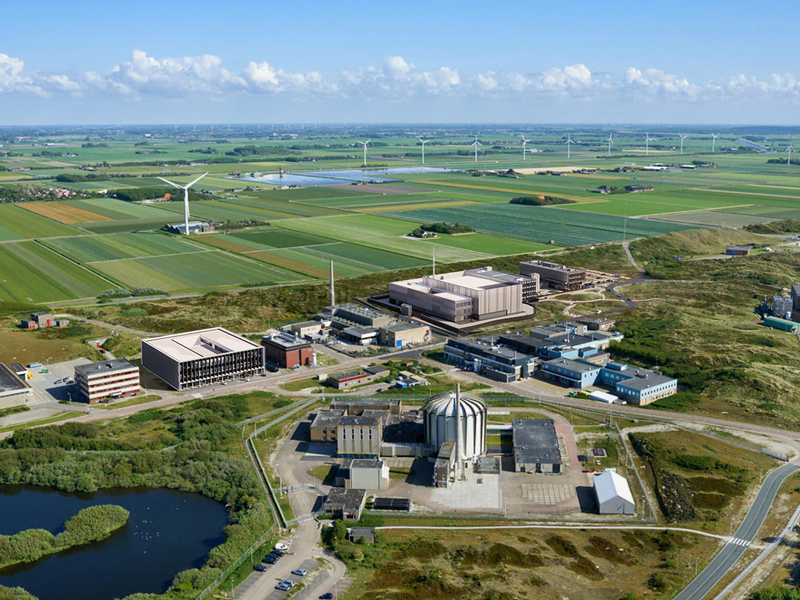Responsibility
All PALLAS activities structurally consider every possible impact on people and the environment. NRG PALLAS strives to eliminate or minimise negative effects and risks and to redress them where possible and ensures that people and the environment are protected from the harmful effects of ionising radiation and occupational or industrial hazards at all times. Additionally, NRG PALLAS aims for sustainable solutions.
At NRG PALLAS, a lot of attention is being paid to nuclear safety, from the reactor core to all other nuclear systems that are needed to operate the reactor safely. All lessons learned in the nuclear field have been taken into account while designing the reactor. The reactor is resistant to potential external hazards, such as a plane crash or earthquakes. NRG PALLAS adheres to extensive international and national laws and regulations in order to safely operate the reactor.
Several nature studies have been conducted since the establishment of NRG PALLAS to assess a potential impact of the construction, transition, and exploitation phases on the environment on and around the Energy & Health Campus. Public surveys have also been conducted, for planning purposes and to inform the public on the presence of natural values in the area.
To minimise any impact on the environment, various optimisations were made by NRG PALLAS during the design process. This is reflected in publications of zoning plans, a Strategic Environmental Assessment, and a landscape quality plan. These have been approved by the Council of State, officially authorising the construction of the PALLAS-reactor.
The latest study (Arcadis, 2022) shows that no protected plant species occur in the study area. No Red List species were found. To ensure the protection of several species of breeding birds and other animal species, such as the sand lizard, careful steps have been taken in collaboration with an ecologist.

For cooling the PALLAS-reactor, water from the Noordhollandsch Kanaal ('Great North Holland Canal') will be used. Environmental impact studies have been conducted and several cooling alternatives have been considered. The usage of water from the Great North Holland Canal was assessed as an option with the least negative impact on the environment, offering the greatest security of supply. Other alternatives pose larger impacts on the environment.
The High Flux Reactor (HFR) also uses water from the canal. For the PALLAS-reactor, the demand for cooling water will not increase compared to the current situation. This is because the thermal capacity of the reactor has been adjusted to the current cooling water demand, so no more cooling water will be required in the future than it is today.

The ecological aspects of the buildings and the consequences of the buildings on the environment have been carefully considered. Sustainability is not only relevant for the buildings but also for the surrounding landscape. The Energy & Health Campus is enclosed between two Natura 2000 areas: The Pettemerduinen (dunes of Petten) in the south and the Zwanenwater in the north. The commitment and respectful relationship between nature and production is reflected everywhere. The integration with the landscape has been carefully considered, resulting in dunes remaining clearly visible and the buildings fitting in with the dune landscape.


